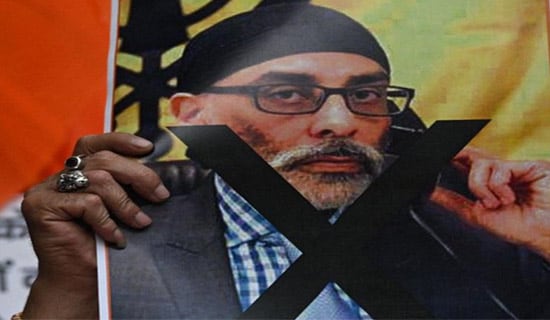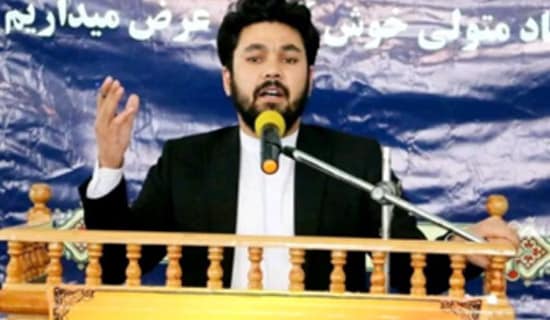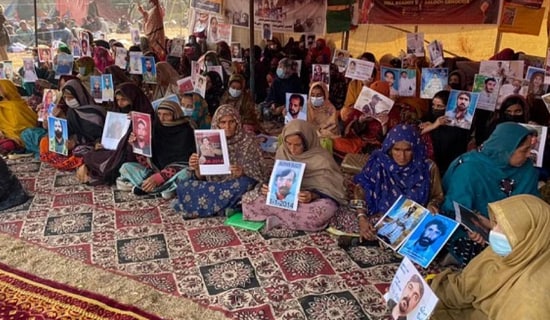Following U.S. President Donald Trump's announcement of American recognition of Jerusalem as the capital of Israel, protests were held in the Palestinian Authority (PA). Even before the announcement, when Trump's intentions became known, the Palestinian factions declared three days of rage and a general strike. Palestinian officials stated that outbreaks of violence were likely to follow Trump's declaration. Despite this, the Palestinian daily Al-Ayyam republished a 2012 article by Al-Ayyam columnist Hassan Al-Batal titled "Why Don't I Want a Third Intifada?" In his article, he proposes ongoing negotiations alongside a "calm intifada," meaning an intifada like the first one, as opposed to the second intifada in which weapons and suicide attacks were used. Al-Batal's approach is in line with the long-standing policy of Palestinian President Mahmoud 'Abbas, that is, popular resistance alongside negotiations. So far, 'Abbas has not announced any change in his approach following Trump's announcement.
The following are translated excerpts from the article:
"The young people have gone back to spray-painting the internationally known Palestinian word 'intifada' on fences here and there. The intifada lexicon has returned, with the rock, the slingshot, and the masked men. Flags of the [Palestinian] state and flags of the factions [are again raised]. Are these the sparks of coals before they burst into flame, or sparks that will never catch fire? I don't know and I don't want to decide.
"But I am familiar with the main principles of the recurring phenomenon, and they are heroic deeds, tragedy, and then [it all becomes] a joke. [Never] go to war while utilizing the methods of the previous war. The terminology remains the same, since it remains the weapons of the weak against the strong, but the situation is no longer what it was, not on the ground, nor in the political realm, nor perhaps even among the public.
"True, the highest flame can ignite from the tiniest spark, as was the case in the [village of] Bil'in [in the West Bank] years ago, where the small nonviolent spark spawned numerous sparks in the area around the security fence and around the settlements, and spread to the detention camps of the occupation – as also happened with the recent demonstration outside Ofer Prison showing solidarity with the hunger-striking prisoners.
SUPPORT OUR WORK

"The first glorious intifada [also] broke out as the result of [the spark of] an unintentional, or intentional, traffic accident, and the second broke out because of [the spark of] a deliberate provocation at the Al-Aqsa compound – leading to a large conflagration which went on for years.
"Whether the intifada was spontaneous or planned is not important. Neither is whether the [PLO] leadership in Tunis [in the first intifada] controlled the flames or whether the leadership in Ramallah lost control of events [in the second intifada]. One way or the other, we know how war can break out, and only seldom do we know how it will fade...
"When it began, the first intifada was radical and the young people rebelled against both the occupation and society's patriarchal nature. It ended with a return to tradition and restrictions on women's dress... Those who observed the second intifada, which was characterized by a move to use weapons... know that the occupation dragged us into playing by its rules. The 'suicide attacks' would have been understandable had there not been so many, and had there not been indiscriminate attacks on civilians while occupation soldiers [i.e. better targets] manned checkpoints.
"Had there not been five or six amazingly courageous attacks, the predominant characteristic of the second intifada would have been suicide attacks. The second intifada did not win the justified global solidarity of the first intifada – which was popular and did not use weapons. The suicide attacks of the second intifada, which constituted [Palestinian] terrorism against [Israeli] terrorism, gave Israel both pretext and justification, in the eyes of the world, for using the method of targeted killings of intifada activists.
"As the PA moved closer to Fatah, and Fatah moved closer to [its military wing] the Al-Aqsa Martyrs Brigades, the occupation army gained a pretext for a systematic and ongoing destruction of the PA and its logistical headquarters – that is, its administrative centers. [The occupation army] went so far as to eliminate the historic leader of the Palestinian people [Yasser Arafat]. The [Palestinian] people were heavily besieged, with the passage between the northern and central parts of the West Bank limited to a very narrow 'alley' – the Jalazoun refugee camp.
"The sparks of the protest look right now like a pot simmering on a low flame; [these sparks] were lit by the young people who forced a confrontation on the occupation army, preventing the latter from taking the initiative as it did in the second intifada. The people are going on with their everyday lives, trying to pick up the pieces following the second intifada and get over the chaos that resulted from the loss of security control in it. This [situation] may be preferable to a third intifada and a [third] disruption in their lives.
"[Perhaps it is better to wage] a calm intifada alongside ongoing negotiations. Why not? Once the [Palestinian] public complains that the negotiations [are yielding nothing], then the PA will be able to launch a political attack, and Israel will be on the defensive, until conditions are more favorable in the world, in the Arab countries, and in the region. Better to accumulate political achievements than to gamble on a third intifada."[1]
[1] Al-Ayyam (Palestinian Authority), December 7, 2012.




